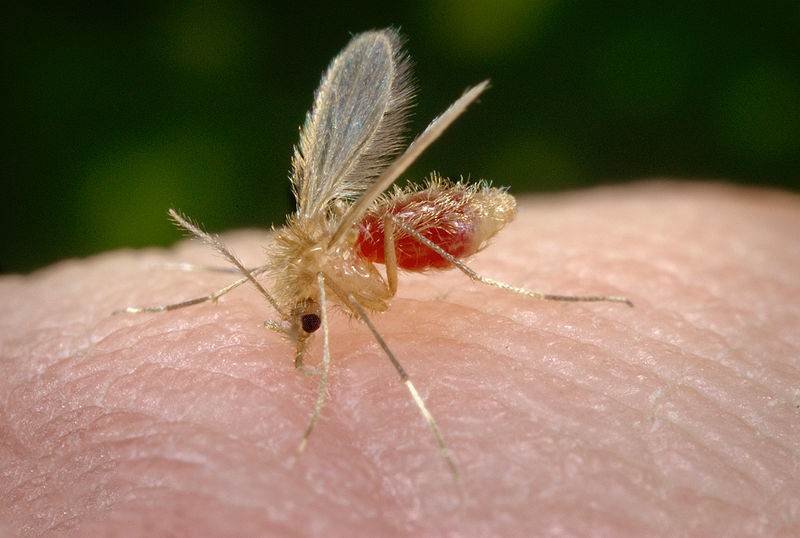Recently, I returned from a trip to Panama where I saw several cases of Leishmaniasis. While it is a rare disease throughout the world, there are several places where it is more common, Central America being one of them.
Leishmaniasis is a parasitic disease that is transmitted through the bite of female phlebotomine sand flies. These flies are small, approximately a third the size of a typical mosquito.
These flies usually get infected by sucking the blood of infected animals or people. Most people are unaware of the presence of these sand flies because they are so small and they do not make any noise. Often, people are not even aware that they have been bitten, although the bites can sometimes be painful. Sand flies are usually active in the twilight, evening and night hours. There have been some reported cases of the disease transmitted congenitally.
The clinic presentation of the disease can vary greatly, from a self-limited cutaneous lesion to mutilating mucocutaneous variants to lethal systemic forms. Classification of Leishmaniasis can be very complex. Traditionally, there are two main classification systems. In the first, this disease is divided into three primary forms: cutaneous, mucocutaneous, and viscerotropic. Cutaneous Leishmaniasis can be localized or diffuse. Leishmaniasis can also be categorized based on geography. Old World Leishmaniasis includes cutaneous or visceral disease that occurs in the Middle East, Africa, Asia, the Mediterranean, and India. New World Leishmaniasis can cause cutaneous, mucocutaneous and visceral disease and occurs in Central and South America.
While Leishmaniasis is a rare disease, it has been known to cause localized epidemics. In East Africa (specifically Ethiopia, Kenya, and Sudan), recurrent epidemics of cutaneous disease have led to high morbidity and mortality in affected communities. Major epidemics of cutaneous disease have also occurred in Afghanistan and Syria as well. Statistics from 2014 show that 90% of new cases reported occur in only six countries: Brazil, Ethiopia, India, Somalia, Sudan, and South Sudan. In South-East Asia, a program called the kala-azar elimination program has seen the reduction in the number of cases from 9,000 to 600 between the years 2006 and 2015. The statistics in the Americas is much more complex. Fifty to one hundred cases of New World cutaneous Leishmaniasis are diagnosed annually in the US. It is contracted mainly in Peru and Brazil but can occur in any country from Mexico to Argentina, except Uruguay and Chile. It is usually seen in rural and poor areas but it appears to be adapting to urban areas as well.
Symptoms
- Skin sores. This can be a skin ulcer that heals very slowly but there are several types of lesions that can be seen. It can be localized or diffuse.
- Breathing problems
- Nasal congestion or runny nose
- Nose bleeds
- Difficulty swallowing
- Ulcers or erosion in the mouth, lips, or nose
- Cough
- Diarrhea
- Fever
- Vomiting
- Abdominal pain
- Cyclic fever that can last for weeks
- Night sweats
- Pallor
- Thinning hair
- Weight loss
Diagnosis typically depends on isolating the parasite. For cutaneous infections, this usually is done through biopsies, skin scrapings, or needle aspirations. For visceral disease, parasites can be detected directly from the peripheral blood, bone marrow, spleen, or liver aspirates. The high sensitivity and specificity of the K39 assay has made more invasive procedures unwarranted. That being said, in endemic countries, the diagnosis is most often made by history and physical examination and these diagnostic tests are simply unavailable.
Treatment of visceral leishmaniasis is imperative as advanced cases are fatal. The sores of cutaneous disease can often resolve on their own, but can take months to years and often leave ugly scars. In some cases, especially in Latin American, cutaneous lesions can spread to mucous membranes. The mainstay of treating Leishmaniasis since the 1940’s has been Pentavalent antimonial compounds. These are not approved to be used in the US. Pentostam, however, is available through the CDC as an investigational drug. This medication is usually given intravenously. Visceral leishmaniasis can also be treated using liposomal amphotericin B. A complete list of anti-Leishmaniasis treatments can be seen in the following chart:
Chart taken from: http://www.sciencedirect.com/science/article/pii/S2211320712000048
Currently, there is a vaccine being studied to prevent this disease. While, we may never see this in the US, it is quite a serious infection and people do die from it. Though, it is rare throughout the world, it is quite a serious problem for the populations where it is endemic. We need to learn more about this parasite and how to prevent the transmission of disease to humans.
Originally published on SERMO: http://www.sermo.com/sermo-solves/introduction
 Copyright secured by Digiprove © 2016 Linda Girgis, MD, FAAFP
Copyright secured by Digiprove © 2016 Linda Girgis, MD, FAAFP


